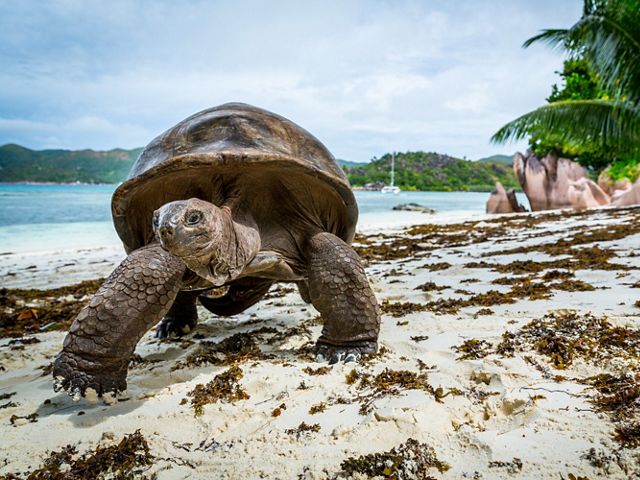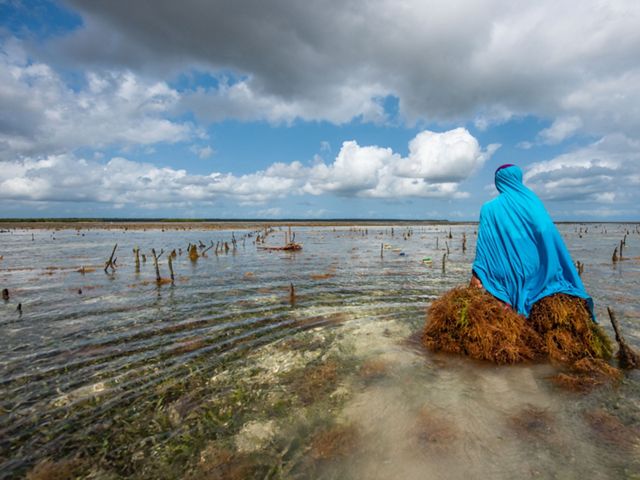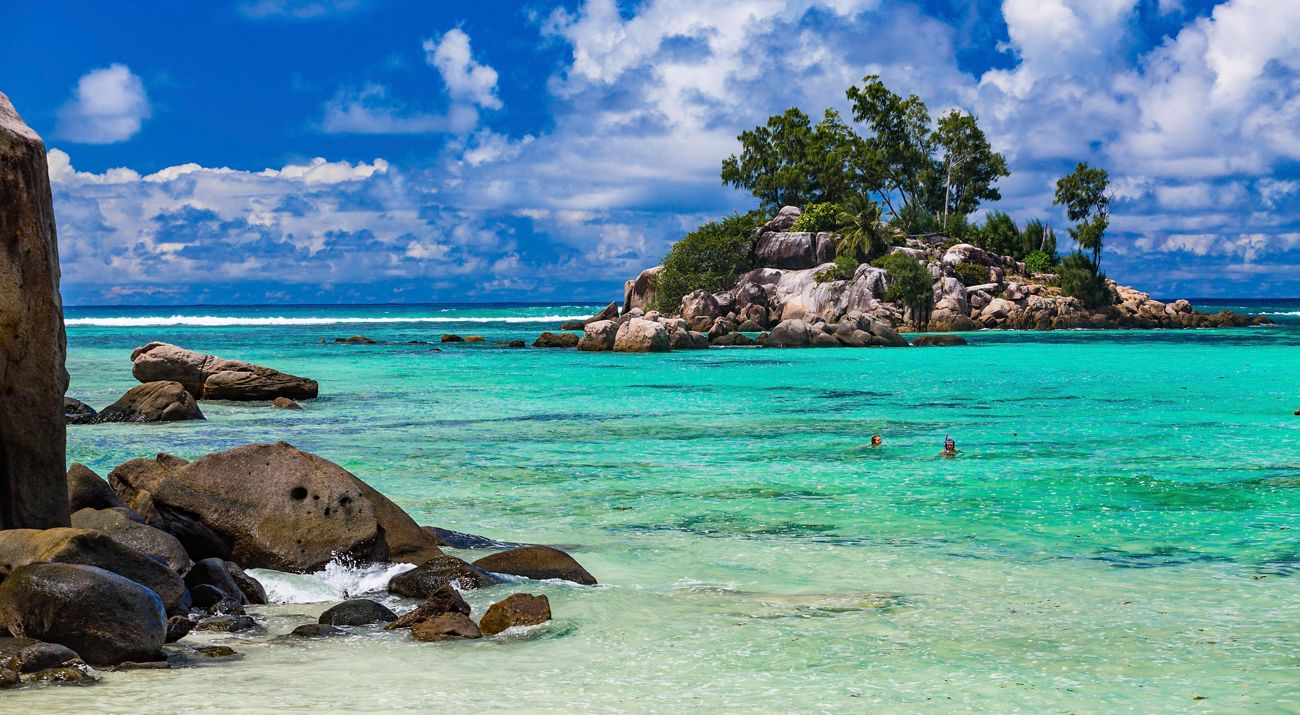Strengthening the Western Indian Ocean's Blue Economy
A new multination project seeks to align development with conservation
The world's oceans have long been under threat by human practices such as pollution, overfishing, and the destruction of habitat. Experts are looking for ways to conserve marine and freshwater environments sustainably, without hindering economic growth for nearshore communities.
The Nature Conservancy's Western Indian Ocean (WIO) Blue Economy Project Manager Tuqa Jirmo weighs in on a new project that is bringing governments and other partners together to advance natural resource protection and strengthen local communities.
Nature.org: What makes the Western Indian Ocean a focus area for TNC?
Tuqa Jirmo: The Western Indian Ocean forms the backbone of the region’s economy, with more than 60 million people living within 100 kilometers from the coast. These communities rely on these rich waters for food, energy, and socio-economic benefits. Additionally, these marine ecosystems are some of the world's most biodiverse, with over 2,200 species of fish and over 350 species of corals.
Large-scale developments threaten to fuel unsustainable exploitation of marine resources, with climate change also compounding the situation by hindering ecosystem recovery from degradation. Our work in collaboration with our partners therefore covers Seychelles, Mauritius, Kenya, and Tanzania, with focus on tackling habitat loss and degradation, poor fishing or overfishing practices, and conflict over the use of marine resources.

Nature.org: How will we tackle these challenges?
Jirmo: One of our first goals is to help countries understand the concept of a "Blue Economy." The Blue Economy concept says that a country can realize its sustainable development goals while also protecting its critical marine resources by identifying the barriers that hinder sustainable growth in activities such as tourism, fisheries, maritime technology and energy extraction. This is where we come in.
Kenya, Tanzania, Mauritius and Seychelles have embraced the Blue Economy concept and are aligning around marine spatial planning (MSP), exploring sustainable finance mechanisms for marine conservation, and improving coastal resilience through a new project called: "Strengthening the blue economy of the Western Indian Ocean through integration of ecosystem services and effective biodiversity conservation.”
The project brings together these four governments as well as civil society partners to advance biodiversity and natural resource protection for the benefit of people and nature within these ecosystems.

Nature.org: Which organizations have come together to take on this multifaceted project?
Jirmo: The project consortium, led by TNC, is in collaboration with partners: the Commonwealth Scientific and Industrial Research Organisation (CSIRO), United Nations Development Programme (UNDP), Northern Rangelands Trust, and the Seychelles Conservation and Climate Adaptation Trust. We will work together with other in-country governmental institutions to embed the programme in each country.
Germany's Federal Ministry for the Environment Nature, Conservation, and Nuclear Safety, through the International Climate Imitative, is providing Euro 7.5 million in funding to the project. TNC, CSIRO, and UNDP, who collectively bring invaluable local technical capacity, are working together in developing science-based fisheries management strategies for priority fisheries, to enhance coastal resilience and develop marine spatial plans.
Nature.org: What are some of the focus areas the partners and governments have identified for their coastal and marine ecosystems?
Jirmo: In Seychelles, marine ecosystems remain threatened by overfishing and lack of fisheries data collection while in Mauritius, economic growth as well as changing patterns of production and consumption are putting pressure on marine resources. More than 70 percent of Kenya’s mangroves are in the Tana Delta and Lamu areas, and their beaches are also an important nesting site for globally threatened sea turtle species. Tanzania is renowned for its beautiful coastal and marine environments which are of tremendous benefit to communities and the growing national tourism landscape.
As human populations continue to grow in these areas, additional resources are required to sustain this growth while achieving socio-economic stability for the communities living in these areas. Our approach is therefore to help drive best practices in sustainable fisheries management, mangroves restoration and biodiversity protection, working with local communities to ensure we build on localized understanding of the benefits of safeguarding resources within their coastal and marine ecosystems.

Nature.org: Marine Spatial Planning is a key tool countries are using to advance their Blue Economies. Take us through MSP and its goals.
Jirmo: Marine Spatial Planning (MSP) is a process to make coordinated decisions about how to use ocean resources sustainably. It is a vehicle to protect areas of high biodiversity from threats such as unsustainable fishing and water pollution while allowing activities from multiple economically important sectors, including fishing, shipping, and tourism in other areas.
Our goal is for the application of MSP to contribute towards keeping healthier oceans by protecting critical ecosystems such as coral reefs, mangroves and seamounts, which in turn increases resilience to climate change and subsequent impacts on communities.
Nature.org: What are the project's key objectives?
Jirmo: The overarching goal for this project to advance Mauritius, Kenya, Seychelles and Tanzania’s Blue Economies through improved conservation strategies and sustainable management practices by 2026.
Targeted objectives include:
· At least one country initiating the MSP process;
· Improvement in countries' capacity to develop fisheries action plans by using FishPath;
· Effect fisheries reforms that result in biodiversity gains; and
· Mangrove ecosystems habitat restoration completed in Kenya
We are already on our way to reaching these objectives due to strong partnerships, targeted interventions, and new technologies.
For example, in Seychelles and Kenya we have deployed FishPath, a web-based tool that TNC and its partners developed to evaluate unique characteristics of specific fisheries. This helps identify management options to drive long-term fisheries sustainability while also supporting priorities for industrial and small-scale fisheries. In addition, we have started the full MSP process in Kenya, have completed MSP feasibility in Tanzania, and are under way with Mauritius government engagement. Mangrove habitat restoration has been ongoing in Kenya.
With continued collaboration between TNC, governments, and our partners on this project, we look forward to witnessing significant biodiversity gains across key areas and strengthened natural resource and habitat protection efforts for local communities and future generations.
